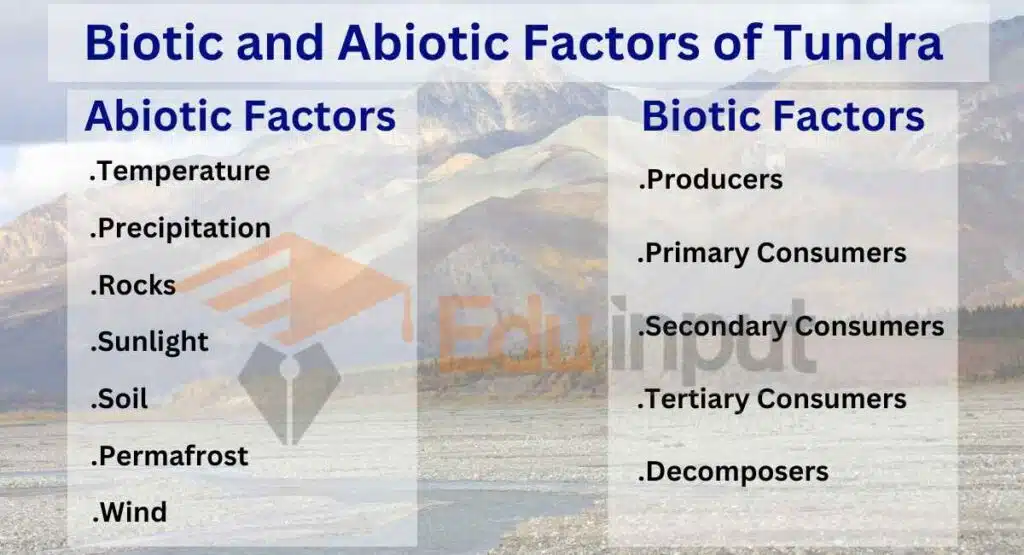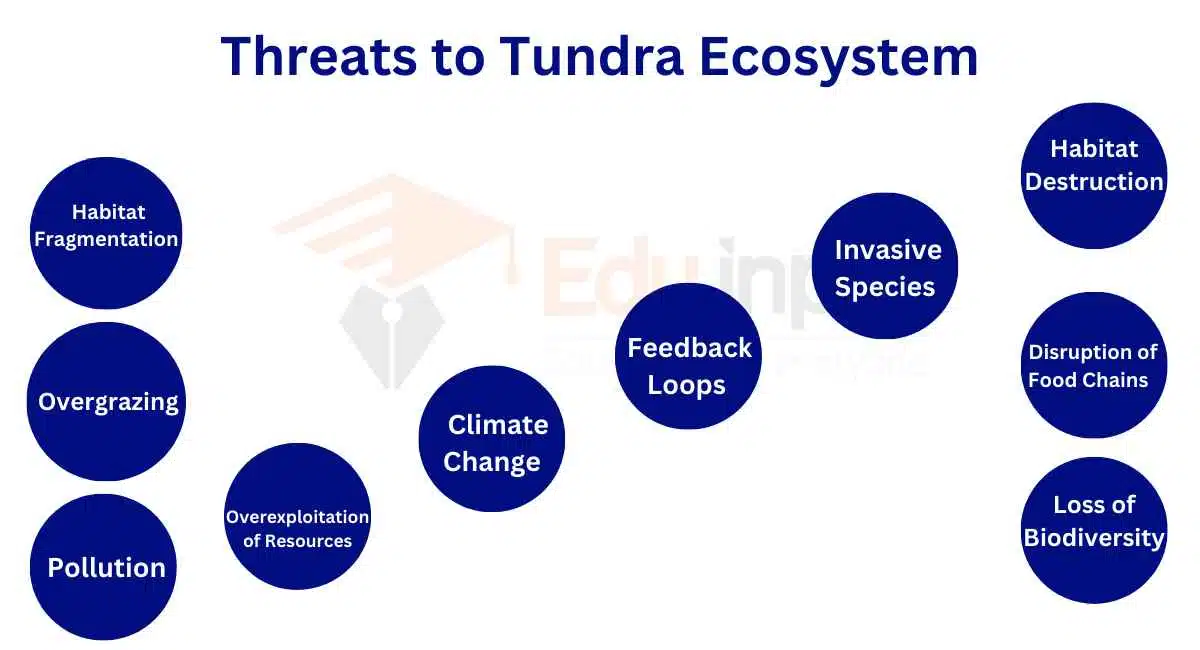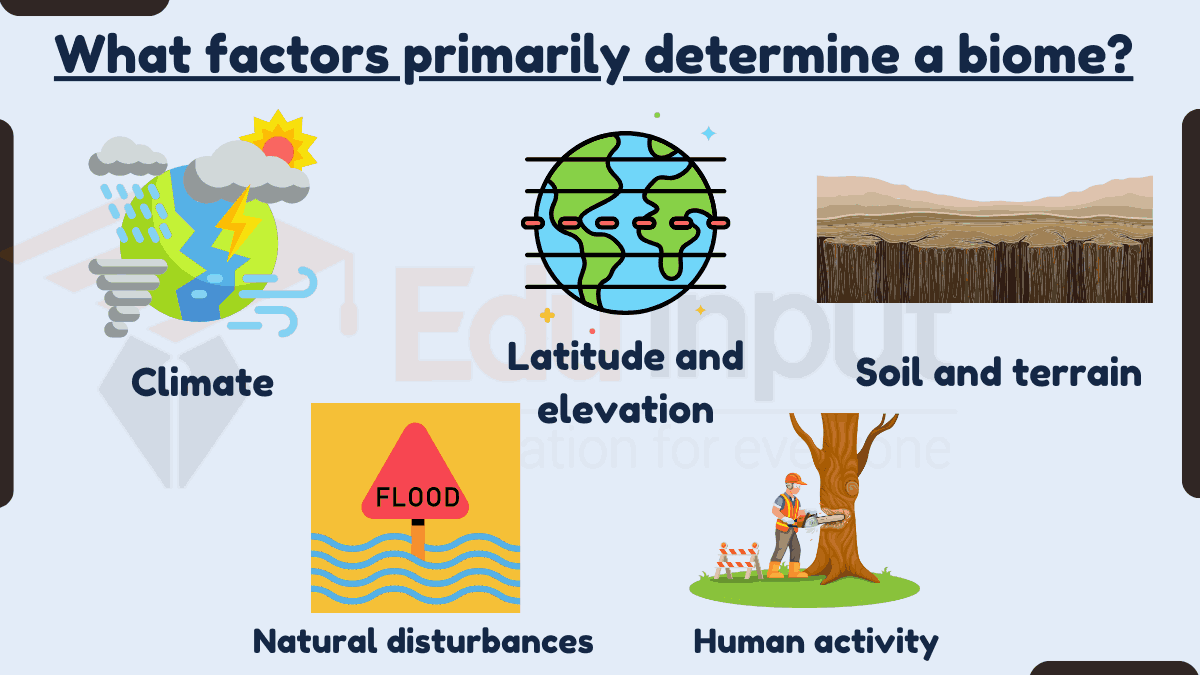Biotic and Abiotic Factors of Tundra Ecosystem
Biotic factors of Tundra ecosystem include low shrubs like willows and bearberry, lichens, herbivores such as muskoxen and Arctic hares, and carnivores like Arctic wolves. Abiotic factors includes permafrost, extreme climate conditions, and limited sunlight, which shape and influence this unique and fragile ecosystem.

Each level of the tundra ecosystem plays important role in maintaining the balance of energy flow and nutrient cycling.
Biotic Factors of Tundra Ecosystem
Biotic factors in the tundra ecosystem can be classified into different levels based on their ecological roles. Here are 5 biotic factors of tundra ecosystem:
1. Producers (Autotrophs)
Willows, cotton grass, and bearberry are examples of low shrubs that are producers in tundra ecosystem. They have adapted to survive in harsh conditions and are capable of photosynthesis to convert sunlight into energy.
Crustose and foliose lichens are important producers in the tundra. They are a symbiotic association between fungi and algae or cyanobacteria.
2. Primary Consumers (Herbivores)
Herbivores in the tundra ecosystem include:
Muskoxen– Large, shaggy mammals that feed on grasses, sedges, and lichens.
Arctic Hares– Small herbivores that primarily eat grasses, mosses, and lichens.
Ptarmigans– Bird species that consume leaves, buds, flowers, and berries.
3. Secondary Consumers (Carnivores)
Carnivores in the tundra ecosystem include:
Arctic Foxes– Small predators that feed on small mammals, birds, eggs, and carrion.
Snowy Owls– Predatory birds that mainly consume lemmings, rodents, and birds.
Wolverines– Carnivorous mammals that scavenge and hunt smaller mammals like rodents and hares.
4. Tertiary Consumers (Apex Predators)
Apex predators in the tundra ecosystem include:
Arctic Wolves– Top predators that primarily hunt herbivores like muskoxen and caribou.
Polar Bears– Predators that mainly feed on seals, but they may also scavenge on carrion and prey on smaller mammals.
5. Decomposers
Decomposers play important role in breaking down organic matter and recycling nutrients in the tundra ecosystem. They include bacteria and fungi that break down dead plant and animal material, returning essential nutrients to the soil.
Abiotic Factors of Tundra Ecosystem
Here are 7 abiotic factors of tundra ecosystem:
1. Temperature
Extreme cold temperatures define the tundra, influencing the distribution and behavior of organisms.
2. Precipitation
Limited rainfall and snowfall restrict the availability of water, impacting the water-dependent organisms.
3. Rocks
Rocky terrain is prevalent in the tundra, influencing habitat availability and providing shelter for organisms.
4. Sunlight
The tundra experiences long winters with limited sunlight and short summers with extended daylight, influencing the growth and activity patterns of plants and animals.
5. Soil
The tundra soil is characterized by a layer of permanently frozen ground, affecting water drainage and nutrient availability.
6. Permafrost
The permanently frozen ground of permafrost impacts plant roots, limits water infiltration, and influences ecosystem processes.
7. Wind
Strong winds are common in the tundra, affecting plant growth and influencing the movement of animals.






Leave a Reply